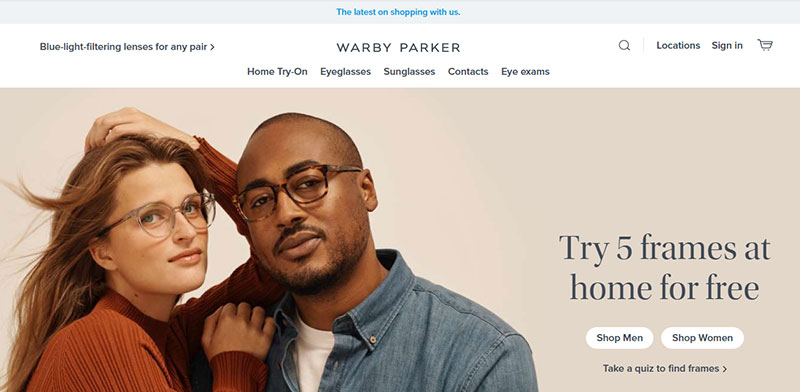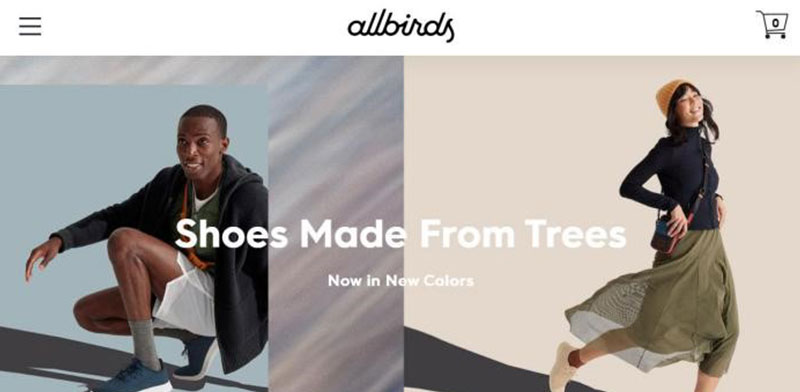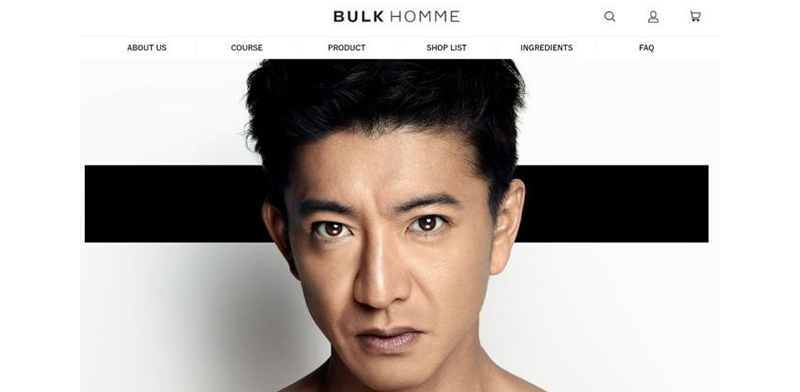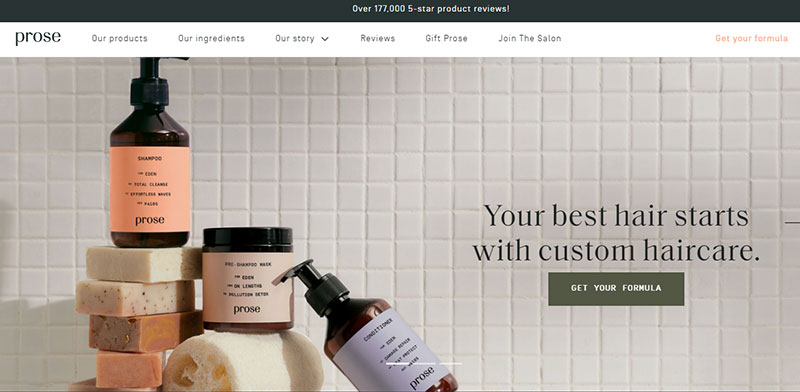Direct-to-Consumer Marketing - Examples of D2C Brands and Strategies

D2C (direct to consumer) refers to a business model in which a company markets and sells their products directly to customers. B2C businesses complete the entire sales and distribution process through their own channels, like with ecommerce sites. Traditionally, B2C marketing relies on retailers to help sell one’s products, but this often means that your products have to compete with other very similar products. However, with D2C you can promote your unique products directly to the customer, and can maintain full control over the marketing-sales process to create a more streamlined customer experience.
Table of Contents
What is direct to consumer (D2C, DTC)?
Direct to consumer, abbreviated as D2C or DTC, is when the manufacturer sells directly to the end user. This simplifies the whole process by cutting out the intermediaries, like wholesalers, distributors, and retailers. In D2C, everything from marketing, distribution, and sales is done by the original manufacturer.
The D2C model bridges the gap between developers and end-users, because communication is 100% direct. When customers have opinions or requests regarding your products, they’ll share them with you, so you can immediately respond and reflect the desired changes in your products.
Studies have also found that 55% of customers prefer to shop directly from a brand, rather than from a retailer. This means that by adopting a D2C model, you could improve the customer experience. However, some B2C businesses sell their products in bulk to the wholesalers in order to make a profit, and in that case, it may be difficult to switch to selling directly to customers.
D2C market size
D2C ecommerce sales in the US from 2020 to 2023

According to Statistica, D2C ecommerce sales in the United States reached 111.5 billion USD in 2020. Online sales from D2C brands are expected to grow steadily the following years, and by 2023, total revenue from these brands is projected to climb to 174.98 billion USD.
The difference between D2C and B2C
B2C (business to consumer) is a business model in which you sell your products/services to individual customers. This sounds like D2C right? However, B2C and B2B are broader terms that tell you whether the product’s target audience is an individual person or another business. Meanwhile, D2C describes how the products reach the customer in an integrated process that is entirely managed by the manufacturer. Also, D2C is used only with manufacturing firms, who generally produce their own products, and have their own sales teams and internal supply chains.
The difference between D2C and ecommerce
Another term that is similar and often confused with D2C is ecommerce. EC, or “ecommerce,” refers to the buying and selling of goods via the internet. Most businesses developed under the D2C model sell their products on their own ecommerce sites, and ecommerce is typically the most important sales channel for D2C brands.
Why should you sell D2C instead of through partners?
How come D2C, a business model that does not involve any partners or retailers, is attracting so much attention?
One of the major reasons is the rapid growth of social media that has lowered the barriers to communication between the seller and the end customer. With social media, customers can easily share their thoughts on a product or brand, and if these reviews are positive, this user-generated content (UGC) is basically free promotion for the seller. Moreover, even the bad feedback is helpful, as they can guide further product development, to provide a better quality product and customer experience.
Also, with social media advertising and adtech, you’re now able to reach a very specific target audience and market your products to the kind of people who are most likely to find value in them. So, even without external partners to help, you can attract traffic to your EC site from ads on social media and receive a decent number of orders that way.
In addition, according to a survey by Brizfeel, 57% of people prefer shopping online to in-store (and this figure will only continue to grow post-pandemic!) That means that by providing an ecommerce site for customers, you’re making sales easier for both yourself and for them.
Examples of successful D2C brands
Warby Parker

Source: Warby Parker
Warby Parker is said to be the first brand in the world to succeed with the D2C business model. In the US, where expensive eyeglasses were the mainstream, the brand gained support from consumers by selling low-priced, high-quality products designed and manufactured in-house.
The company also excelled in social media marketing. They offered a service where customers could order products to just try them on first, and then if they posted a pic of them wearing the piece on Instagram with a certain hashtag, Warby Parker would comment with advice on how to style it. This one-to-one communication has lead to major brand recognition, and in 2015, they were selected as one of the "World's Most Innovative Companies" by Fast Company Magazine.
Allbirds

Source: Allbirds
Founded in 2016, Allbirds is a very dynamic D2C brand, currently valued at 4.1 billion USD. Allbirds makes eco-friendly and comfortable shoes made of natural materials, like merino wool, eucalyptus fiber, and sugar cane.
When the founders of Allbirds launched their business, they decided they would sell only online, and not change models every season. Allbirds is able to focus on designing the best-quality shoes since they don’t spend time or money on retailing or advertising. Moreover, they mainly use social media like Instagram and Facebook as platforms for customers to easily contact them through.
Allbirds also has an innovative return policy, in which you can return shoes for 30 days, no matter how much you wear the shoes, to combat the anxiety people feel when ordering shoes online. This also, of course, establishes a strong sense of trust in the brand!
Casper

Source: Casper
Casper, which sells high quality bedding and mattresses, is another brand from New York that has made headlines by achieving an astounding sales of about 90,000 USD in two years and becoming the first D2C company to go public in 2020. Casper focuses on digital strategy, developing sleep tracker apps and chatbots to support sleep and connect with customers by sending out information about sleep in general. In addition to this, the company has achieved significant results in a short period of time through a sales strategy that utilizes various techniques such as a minimalist product line that is easy to select, the use of influencers to promote a fashionable image, and free 100-day returns.
BULK HOMME

Source: BULK HOMME
BULK HOMME is one of the most successful examples of digital D2C in Japan, having been in operation since the time when the term D2C was not yet widely used in Japan. The company has built its brand image by selling well-designed, high-quality facial cleansers, milky lotions, and toners. Although the brand started with a D2C business model, they have expanded to selling products in retail stores as well, and they conduct mass marketing such as TV commercials.
Prose

Source: Prose
Prose, a haircare brand from the US, managed 1 million USD in monthly sales in their first year of operation in 2018, and is now a well-known name. Prose begins its product creation process with an online Q&A session with customers, finding the perfect combination for each person from 80 different ingredients. The products are all custom-made and formulated at their factory, and arrive at your home in 5 to 10 days.
Arnaud Plas, the founder of Prose, has said that these days, it’s difficult for D2C brands to compete solely on price, especially with the saturation of the internet and online ads. Now, more than ever, businesses have to come up with unique branding to achieve sustainable growth. Consumers want to buy from brands that align with their values, and without branding power, they are unlikely to return and buy from you again.
D2C marketing strategies
1. Email marketing
Email marketing has been the #1 marketing channel for bringing in the highest ROI for 10 years in a row, at $42 back for every $1 spent. I highly recommend you build a mailing list and start a regular email newsletter for the purpose of nurturing your leads and strengthening your branding.
The key point here is to always provide one clear CTA (call-to-action) in your email, whether it is an exclusive coupon or a free sample. This should immediately clue the customer to why they should click on the link and visit your website. And aside from lead nurturing, your emails should also aim to encourage web traffic, and ultimately conversions (orders) as well.
Check out our key tips for getting better results from marketing emails:
Six Strategies to Improve Your Email Open Rates
2. Search engine optimization (SEO)
SEO is a more long-term strategy, but without a doubt a necessary investment as people tend to search on Google first when searching for a specific product. You’ll have to conduct keyword research to see what queries your target audience is searching and then create content around those topics.
The easiest way to start working your way to higher rankings on Google is by blogging. Create enjoyable, helpful content that your main target customers are likely to have an interest in. This content can also be repurposed in emails and shared on social media so even if you can’t see results in terms of SEO immediately, you can still share blogs on other channels.
Learn how to write a blog post that performs well in SEO here:
Blogging for Business: How to Write a Successful Blog Post
3. Build a great customer experience (CX)
Since loyal customers are vital to the D2C models, you’re going to want to cultivate a personalized, customer experience that surpasses that of your competitors. Use marketing automation and other martech to analyze customer behavior, and then send each individual the type of content you know they’d be interested in, based on their past online activity.
Also, take advantage of your social media accounts and make it possible for customers to chat with you directly with any questions or opinions regarding your products. Another best practice in D2C is to install a chatbot with various answers programmed in advance, so that you can respond to customers even when there’s no actual salesperson around to respond themselves.
Conclusion
The D2C business model is a great choice for manufacturers who want to build a stronger online presence, long-term customer relationships, and a brand following. We can expect to see the D2C market continue to grow in upcoming years, so if you too want to start-up a D2C business, you should start sooner rather than later and get your EC site set up. SEO and content marketing is also essential for D2C, and these both require a lot of work before you can start seeing major results, but they are definitely worth the payoff of a steady stream of traffic to your site.

.jpg)
.jpg)
.jpg)


